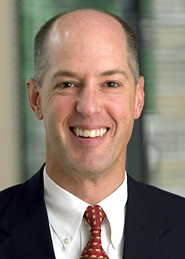The percentage of high-touch and research-driven trades rose last year, but the Street also felt the pain of a 12 percent drop in commissions, according to a recent Greenwich Associates study of the buyside.

Greenwich’s 2011 U.S. Equities Investors Study reports that brokerage commissions paid by U.S. institutions on domestic trades were $11.55 billion from Q1 2010 to Q1 2011. That’s substantially lower than the $13.18 billion reported in the previous survey done in 2010 and a whopping 17 percent off the 2009 survey’s $13.95 billion.
According to the report, the drop in commissions was unexpected as previous survey respondents were predicting the pool of money would grow by about 15 percent during the survey year.
"Throughout 2010 there was a lack of conviction among investors, and more cash that people expected to enter the market remained on the sidelines, keeping trading volumes unexpectedly low," said Jay Bennett, one of the survey’s authors. "Although institutions seem to have gained some confidence that markets will stabilize and trading activity will pick up in 2011, there is still a considerable degree of ambivalence."
Greenwich Associates interviewed 217 equity fund managers and 304 U.S. equity traders between November 2010 and February 2011.
The report also shows that commission rates remain under pressure. The average "all-in" commission rate paid by U.S. institutions to brokers was 3.7 cents per share in the 2011 study–down from 3.8 cents from 2010’s study. The main culprit, Greenwich said, wasn’t a migration to e-trading systems– which actually declined as a share of overall trading volume last year–but rather a decline in the average commission rate for normal, high-tough agency trades.
As a result of falling commissions, the buyside has altered its trading strategies. Greenwich said buyside traders are increasingly shying away from trading electronically and executing more trades via high touch.
Indeed, the survey shows U.S. equity trading volume executed via high-touch trades increased to 60 percent from 55 percent, as institutions shifted priorities from minimizing trading costs to paying for essential research and advisory services.
Despite the increase in high-touch trading, algorithmic trading did not see a decrease in usage as institutions in the 2010 to 2011 period executed 19 percent of total U.S. equity trading dollar volume through algos–the same as in the prior survey.
"I think the shift to high-touch looks cyclical," Bennett said. "The amount of trades done electronically should recover as overall volumes bounce back or when the buyside’s assets under management recover."
The average U.S. institution covered by Greenwich Associates paid $23.5 million in brokerage commissions on trades of domestic equities for the 12 months covered in the survey, which ended January of this year. That’s down from $27.2 million the prior year.
Despite the drop, the survey reported most institutions entered 2011 "guardedly optimistic" about this year. Greenwich reports that institutions, on average, expect this year’s U.S. equity commission pool to increase 8 percent. However, more than 40 percent of those surveyed expect commissions to be flat.
Mutual funds are the most bullish, looking for commissions to jump 13 percent while at the other end of the spectrum are pension funds and endowments. These latter groups are expecting broker commission payments to contract by 1 percent on U.S. equity trades.
"There is a lot of focus on alpha generating research, especially for the pension funds, who have been looking at hedge funds," Bennett said. Since the funds need to generate rates of return around 8 percent or better to meet their liabilities, investing in equities isn’t as appealing, compared to the offerings of hedge funds, he added.
Greenwich data showed that currently 59 percent of commission spend is used to pay for equity research, advisory services, sales coverage and corporate access–up from 53 percent for the last survey period. Meanwhile, the amount of "free business" devoted to sales trading and agency took a hit and dropped to 30 percent in the 2010-2011. That figure was 35 percent in the prior year.
The total mount spent on sellside research and services during the 2010-2011 period was $6.8 billion, off slightly from the $7 billion in the previous survey.
Lastly, the report noted institutions relied more on client commission arrangements–CCAs–in their domestic equity trading business to pay for research. Sixty-four percent of respondents used CCAs in 2011, up from 54 percent the prior year.



